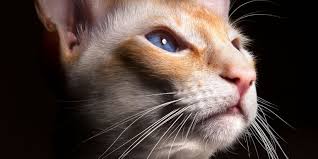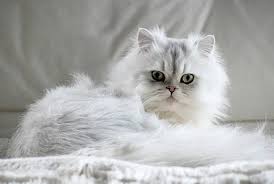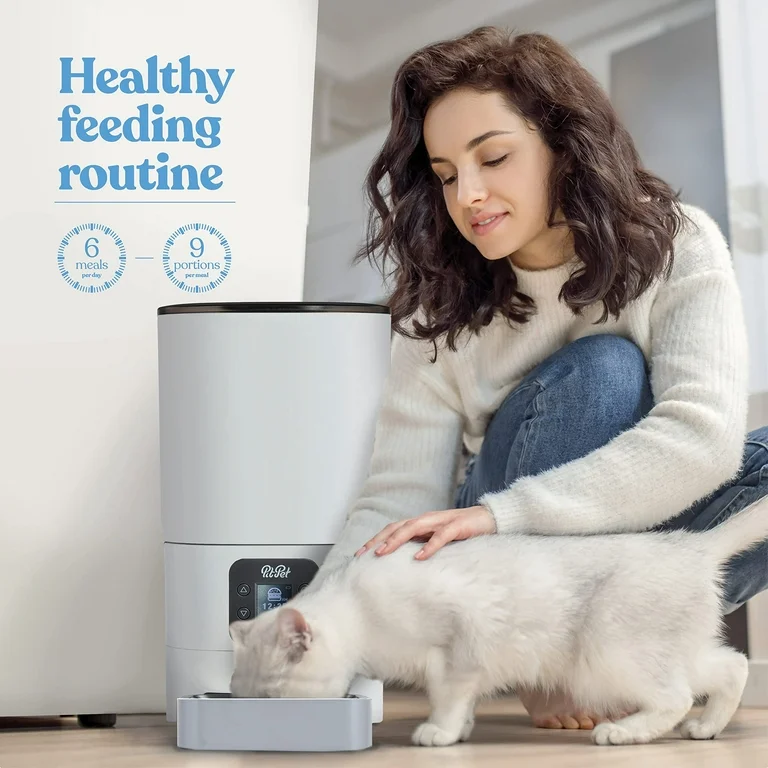Cats have been cherished companions to humans for thousands of years. They bring joy, comfort, and companionship to millions of homes worldwide.

But with the rapid pace of technological advancements and changes in human lifestyles, the future of cats could look very different from what we know today. In this article, we’ll explore how emerging trends in technology, science, and societal shifts are poised to impact the lives of our beloved feline friends.
1. Smart Homes and Cats: A Perfect Match
The rise of smart home technology is revolutionizing how we interact with our pets, and cats are no exception. In the near future, smart cat feeders, automated litter boxes, and interactive toys could become commonplace in households. Imagine a world where your cat’s food is dispensed automatically based on its eating habits, or where an automated litter box does all the cleaning for you. These innovations not only make life easier for cat owners but also improve the quality of life for cats, ensuring they get the right nutrition and care without constant human intervention.
Smart technology will also offer new ways to monitor and track a cat’s health and behavior. Wearable devices, similar to fitness trackers for humans, will allow owners to keep an eye on their pet’s activity levels, weight, and overall well-being. This data can be shared with veterinarians, making preventive care and early diagnosis easier and more accurate.
Next Read: Top 6 Grain-Free Cat Foods for Optimal Health
2. The Role of Artificial Intelligence in Feline Care
Artificial Intelligence (AI) is already being integrated into various aspects of pet care, and cats will benefit from it in the future. AI-powered systems can help predict health issues by analyzing data from sensors and devices, and even detect changes in a cat’s behavior that might signal an underlying medical condition. For example, AI-driven cameras might be able to observe your cat’s movements and postures to detect signs of pain, injury, or illness, alerting you to potential problems before they become critical.
Moreover, AI will play a significant role in designing personalized care routines for cats. For instance, AI could recommend customized feeding schedules or specific types of toys to improve your cat’s mental and physical stimulation. The potential for AI to understand individual cat behavior and preferences will lead to a more tailored and responsive approach to feline care.
3. Genetics and Health Advances: Longer Lives for Cats
In the future, breakthroughs in genetics and veterinary science could lead to healthier, longer lives for cats. Genetic research may allow veterinarians to predict the likelihood of certain diseases, such as kidney failure or feline leukemia, based on a cat’s DNA. This would enable earlier intervention and more effective treatment plans. With advancements in gene therapy, we may even see the possibility of curing genetic diseases that currently affect cats, extending their lifespan and improving their quality of life.
Moreover, as veterinary care continues to evolve, treatments that were once considered cutting-edge may become standard. For example, advances in stem cell therapy and regenerative medicine could become commonplace in treating conditions like arthritis or organ failure in cats, offering new hope for aging pets and those with chronic illnesses.
4. Sustainability and Eco-Friendly Cat Products
As sustainability becomes an increasingly important issue for consumers, the future of cat products will likely reflect a growing demand for eco-friendly alternatives. From biodegradable litter to sustainable cat toys and accessories, the cat care industry will evolve to meet the needs of environmentally-conscious pet owners. In addition, the development of green technologies will enable more sustainable ways of producing pet food, ensuring that cats can enjoy their meals without harming the planet.
Pet owners are already becoming more aware of the environmental impact of their purchases, and this trend will continue to grow in the coming years. Brands will respond to this demand by offering eco-friendly, ethically sourced, and cruelty-free products designed to minimize harm to the environment while keeping cats happy and healthy.
5. Cats and Urban Living: The Rise of Cat-Friendly Cities
As cities grow and urban living becomes the norm for more people, the design of urban spaces will need to adapt to accommodate the needs of cats. Cat-friendly cities may include dedicated green spaces for cats to roam, climb, and explore safely. Urban areas might also feature more pet-friendly infrastructure, such as pet-friendly public transportation, open-air cafes, and cat-specific playgrounds.
The future of urban design could include smart homes and buildings that cater to the needs of cats, with features like built-in climbing structures, automated feeding systems, and windows designed to provide optimal views for feline entertainment. This would ensure that indoor cats in urban environments have the space, stimulation, and safety they need to thrive.
6. Changing Attitudes Towards Cats and Their Role in Society
As society continues to evolve, so too does the role of cats in our lives. In many cultures, cats have already transcended their traditional roles as hunters or companions, becoming beloved family members. In the future, cats might be recognized for their therapeutic qualities even more. For example, the increasing use of cats in therapeutic settings like nursing homes or hospitals could become more widespread, as studies continue to show the positive effects of feline companionship on human health.
Additionally, the trend of adopting cats from shelters rather than buying them from breeders is likely to continue growing. As people become more aware of the benefits of adopting shelter pets, the demand for responsible pet ownership will help reduce the number of homeless cats and provide them with loving homes.
Next Read: Are Bengal Cats Legal in Florida?
7. The Digital World: Cats as Social Media Stars
Cats are already internet celebrities, with viral videos and memes flooding social media platforms. In the future, cats may have an even bigger presence in the digital world. Whether it’s through live-streaming their daily activities or being featured in virtual reality experiences, cats will continue to entertain and engage audiences globally. Their quirky antics, adorable behavior, and unique personalities make them ideal candidates for the digital age.
For cat owners, this could mean a new way to connect with other cat lovers around the world. Social media platforms specifically for pets may allow owners to share experiences, offer advice, and showcase their cats’ talents or unusual behaviors. This digital connection will enhance the bond between people and their feline companions, creating a global community of cat enthusiasts.
Conclusion: The Bright Future of Cats
The future of cats is undeniably exciting, with technological advancements, scientific discoveries, and societal changes shaping how we care for and interact with our feline friends. Whether it’s through smart home technology, genetic breakthroughs, or a growing awareness of sustainability, the next few decades could bring about significant improvements in the lives of cats and the way we relate to them.
As we continue to advance in these areas, it’s clear that cats will remain not just our companions, but an integral part of our lives in the years to come. With their playful nature, independent spirit, and affectionate personalities, cats will undoubtedly continue to thrive in the future—thanks to the innovations and care we provide them today.





